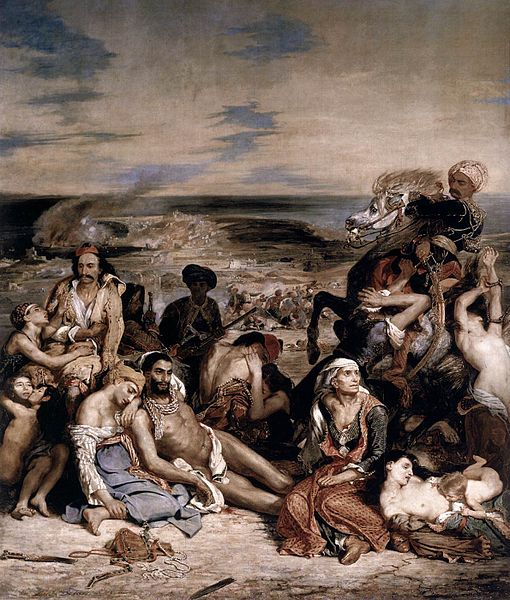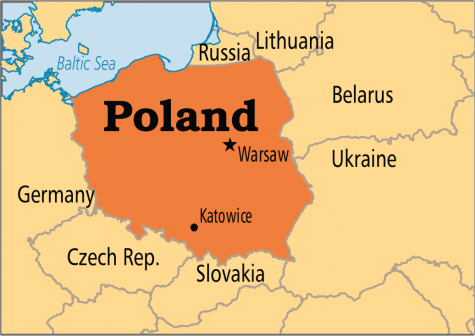When Whites Weren’t On Top

Race, racism, oppression and privilege, all issues of the modern time- with controversy all about. In this discussion, there is inaccurate, or straight up, wrong information. One such being that whites, as a racial group, have never at any point of history experienced oppression. That is historically inaccurate, as all races have a history of being oppressed and oppressing themselves and others. Here is the evidence, and examples, of oppression of whites by non-whites.
First let’s define the term white. According to the Department of Education, Europeans, Middle Easterners and North Africans are white. Now let’s give a sensible definition: Europeans and some North Africans (I.E Berbers, descendants of Greek and Latin colonists).
After the fall of the western half of the Roman Empire in 476, the eastern half remained and attempted to reconquer the western provinces. It was successfully able to recapture Italy and Rome, though it was only held until 752. In that time, the resources needed to hold Western Territories drained the resources of the Roman Empire, and wars with Persia left both it and Persia weakened. This open the door for the zealous conquest of the Muslim Arabs, after the death of Prophet Muhammad. Muhammad himself used warfare to unite Arabia under Muslim rule, but died in 632 before conquest of the Roman and Persian empires could ensue. His successors successfully managed to conquer Syria, Egypt, the North African Coast, and all of Persia. Before Muslim conquest, Syria and Egypt were largely Christian, as the official religion of the Roman Empire, Christianity spread rapidly.
Muhammad in his farewell address preached tolerance of other religions, but it was not always followed. The jizya, or tax on non-Muslims (Dhimmis), was more than the tax forced on Muslim citizens and was meant to encourage conversion to Islam by making practicing other religions economically difficult. In fact many Greeks and other whites in conquered areas left without their property, which could not be above, physically, Muslim property. In general Dhimmis were treated as second class citizens, however,they were given some level of freedom under the Rhashidun Caliphate . While restrictions were initially based only on religion, under the Ummayyad it became based on whether or not you were Arab. Non Arabs, including Muslims, were not allowed to hold public office, making all regional government decisions made by Arabs, who were not native to the region. More so, there was a general feeling of Arab superiority in were non-Arabs were not allowed to live in a garrisoned town, or a protected town with state troops. Converts to Islam had to get permission from an Arab tribe and take the name of said tribe, which removed their cultural identity with their true identity. This was the underlying cause that led to the Abbasid Revolution, where non-Muslims, non-Arab Muslims, and Shias (who were heretics to the official Sunni religion) had an unprecedented sense of unity in a common enemy, and established a more tolerant Abbasid Revolution, which however still had issues.
While the oppression stated wasn’t only towards whites, this oppression was. The Ummayyad Caliphate was kicked out of the East, but remained in the West in the conquered Iberian provinces of modern day Spain and Portugal. There the same oppression that happened to non-Arabs in the east happened here. The Moors and Arabs were given special treatment and oppressed non-Moorish and non-Arab peoples. As was the case in the east, the remnants of the Ummayyad Caliphate, now called the Caliphate of Córdoba, instituted the jizya and had oppressive laws against non-Moors and non-Arab peoples in which they had less power in court and were given harsher punishments for the same crime.
Oppression of whites happened in areas of Europe not directly controlled by the caliphates and wasn’t always done by Muslims. The Cumans, a central Asian Tengri tribe and civilization, frequently oppressed Slavs, Balts, Finno-Urgics and Uralic peoples. The word Slav most likely comes from the Latin word for slave, as Slavs along with other said groups were enslaved after their villages, towns and cities were pillaged. This slave trade would largely be based around the Black Sea and Crimean peninsula where slaves were sold to both other Europeans, but mostly to non-Europeans. This intensified when the Mongols invaded, massacring those who resisted Mongol conquest in a near genocide. Conquered groups were treated decently under Genghis Khan’s tolerance, but after his death the empire, splintered and Eastern Europe was ruled by the Golden Horde. The Golden Horde was Muslim, but its population remained the same central Asian people with the same oppression of whites. Except this time the oppression was greater with the slave trade becoming faster and more profitable with the growth of first Seljuk Turks and later Ottoman Turks, who oppressed whites in their own ways. Millions of slaves would be taken from Russia, Poland-Lithuania, Gothic Theodoro (in Southern Crimea), Pontic (Black Sea Greeks) colonies, Armenia, Georgia, Moldova and even Hungary from the early 1400s to late 1600s. These slaves had their conditions decided by their master, some were allowed to rise in society, others were worked to death.
During the whole time the Roman Empire remained largely in the Balkans and Anatolia, and began regaining some ground from the Muslims, until the disastrous battle of Mazikert where the Roman Army was destroyed by a smaller Seljuk Turk force. Almost all of Anatolia was lost. This was the beginning of both the end of the Roman Empire and the oppression of whites in Anatolia, and later the Balkans. In fact the oppression of whites and Christians under the Seljuks gave ample evidence to justify the Crusades. However, despite temporary “reconquest” of the Holy Lands, the Turks were not kicked out of Central Anatolia, where Greeks, Armenians, Cappadocians, and Georgians were subject to Turkification. This was process, in which not being Turkish or Muslim, oppressed individuals to a point of wanting to convert and become Turkish. After the Seljuk Turks were conquered by the Mongols, and after the Mongols were kicked out of Anatolia, a new Turkish power emerged: the Ottomans. The Ottomans took Roman possessions in Anatolia (already weakened by 4th Crusade) and united most of the Anatolian Beyliks (kingdoms). Then they took Gallipoli and reduced the already weakened Roman Empire to the city of Constantinople and a few islands in the Aegean and Peloponnese. They kept on conquering, as other Greek states fell, Bulgaria fell, Bosnia fell, Albania fell and most of Serbia fell. Wallachia and Moldavia (Romanian peoples) were subjugated as vassals, and along with the Roman Empire, had to pay tribute to remain somewhat self controlling. Constantinople fell in 1453, with its white population pillaged, raped or sold as slaves. The few that remained, would along with the Anatolian and Balkan peoples, had to either become Turkish peacefully or be oppressed.
The Ottoman Empire, for being one of the more tolerant empires, had a long history of oppression of non-Turkish populations. Non-Muslim white communities had 1 in 5 male children forcefully taken away from their parents, rarely returned, to serve in the armed forces. Some were even castrated, or had their genitals removed, and made into elite soldiers called Janissaries. They were later given opportunities to rise in society. Non-Turkish populations were heavily taxed, and when they revolted, massacres as reprisal occurred. Nationalism began to take place in the Ottoman Empire along with the rest of Europe in the later 18th and 19th centuries. Greeks revolted in 1821 and managed to establish a free Greek nation , but without encompassing all Greeks that remained in the Greek region and Anatolia. Serbia gained independence, and with the help of Russia, Bulgaria, Moldova and Wallachia (the last two united to form Romania) gained independence. However, millions of whites still lived under Turkish rule, until the end of World War I. As the Ottoman Empire fell apart, whites (mostly Greeks and Armenians) were accused of siding with the allied powers and genocides occurred against them as punishment. Millions would die. Those remaining when the new Turkish state of Turkey emerged, were mostly killed ,or removed, from their nearly 2,000 year homelands after Turkey regained land in their “War of Independence.”
With all these examples, saying whites were never oppressed is historically inaccurate to say the least. This does not mean whites did not oppress others and that whites in America experience the same level of oppression as minorities. However, “whites” in other regions experienced, or continue to experience, oppression from “non-whites.”
Photo credit: File:Eugène Delacroix – Le Massacre de Scio.jpg











